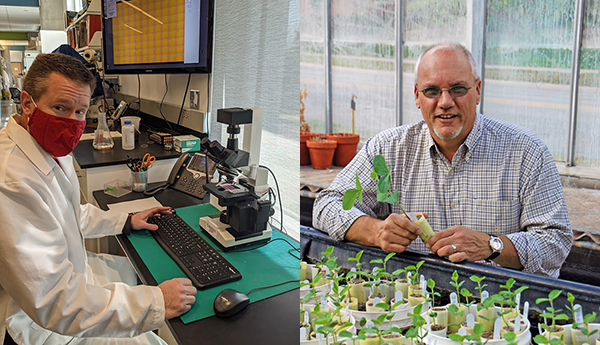USA
May 4, 2021
The soybean cyst nematode (SCN) is the most damaging pathogen of soybean in the United States and Canada and it is spreading rapidly, according to information compiled by Gregory Tylka and Christopher Marett, nematologists at Iowa State University. SCN was first found in the United States in 1954 and most recent estimates show that SCN results in $1.5 billion in annual yield losses.
 Christopher Marett (left) and Gregory Tylka (right)
Christopher Marett (left) and Gregory Tylka (right)
“The continuing spread of SCN is alarming, but not surprising,” said Tylka. “Anything that moves soil can move the nematode, including wind, water, and farm machinery.” In an article published in Plant Health Progress, Tylka and Marett report that SCN was found in 55 new counties in the United States and 24 new counties and rural municipalities in Canada between 2017 and 2020. Most dramatically, New York State, which saw SCN in only one county pre-2017, reported SCN in 29 new counties, and Manitoba reported SCN for the first time in 2017.
The nematode is easily overlooked as it often does not cause obvious aboveground symptoms for several years even as it begins to immediately reduce yields. “Farmers often assume that they do not have SCN because the soybeans don’t look sick,” said Tylka. “This is an unfortunate mistake because SCN numbers are low when the nematode is first introduced into a field, but those numbers increase steadily if left unmanaged.
Tylka urges all soybean farmers to test their fields by soil sampling before every second or third soybean crop for the presence of SCN even if the pathogen has never been found in their fields before. He also underscores the need for continued investment in basic and applied research on the biology and management of SCN by private industry, government research funding agencies, and soybean checkoff organizations.
To learn more about the alarming spread of SCN, read “Known Distribution of the Soybean Cyst Nematode, Heterodera glycines, in the United States and Canada in 2020” published in the March issue of Plant Health Progress. His research group also strives to reach soybean farmers and those who advise them through the SCN Coalition. Learn more at www.TheSCNCoalition.com.